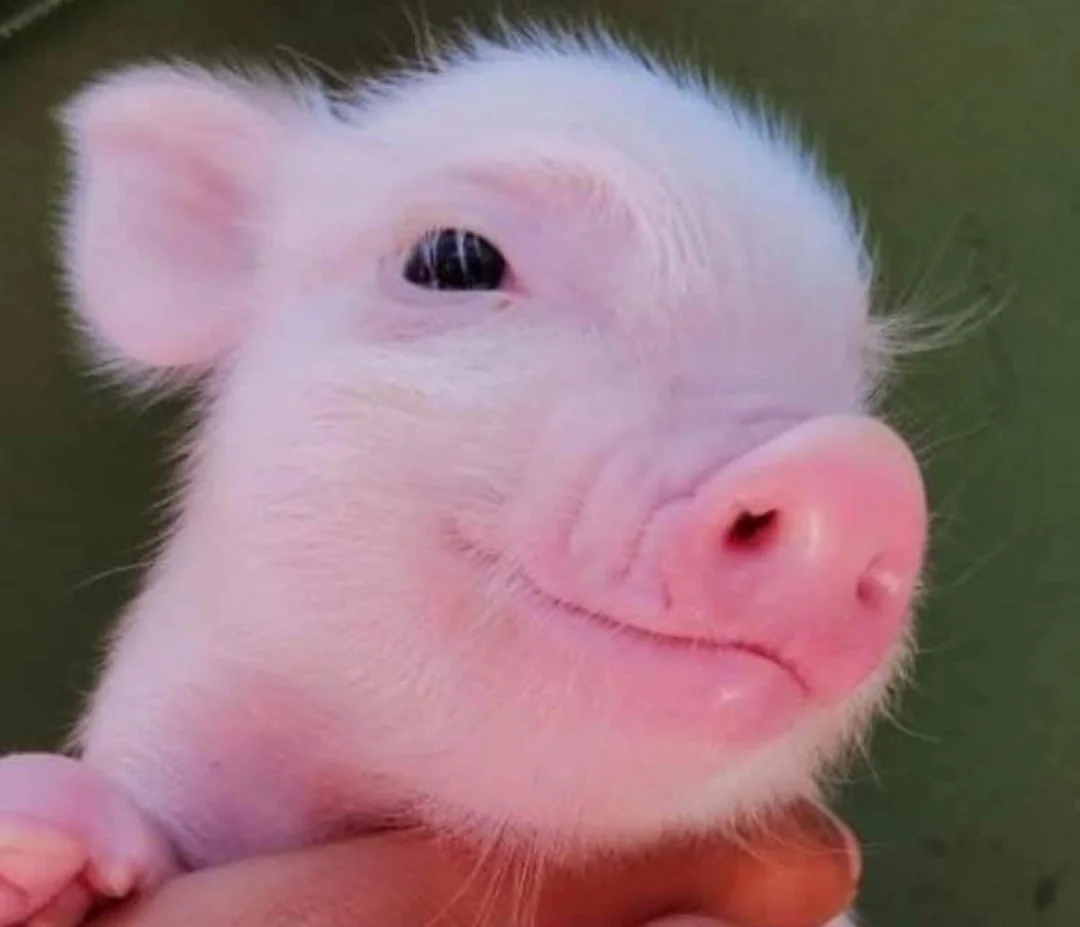Variety Overview
Kingdom: Animalia
Phylum: Chordata (Phylum Chordata)
Subphylum: Vertebrata (Vertebrata)
Class: Mammalia (Mammalia)
Species: Pet Pig
Subclass: Eutheria (Eutheria), Placental mammals
Distribution Areas: Thai Miniature Pig, Japanese Miniature Pig, Taiwanese Miniature Pig, etc.
Design Characteristics
Vietnamese pot-bellied pigs were initially bred in the 1980s not for households but for zoos. However, these mini pigs quickly gained popularity, sparking a pet trade boom. A Canadian zookeeper named Keith Connell later brought mini pigs to Canada, followed by Keith Leavitt who introduced them to Texas. Though their efforts were independent, they collectively set the stage for the widespread popularity of mini pigs in the United States today, offering more choices for those looking to adopt these unique pets.
Vietnamese Pot-Bellied Pig – This breed might be the most popular today due to its appealing appearance and docile nature. Their pronounced backs and large bellies—which would indicate overfeeding in other animals—are entirely normal and healthy for them. They typically stand around 35 cm tall and weigh approximately 22.5 kg.
Juliani Pig (Painted Pig) – These tiny creatures are indeed quite small with an average height ranging from 25 to 40 cm and weighing between 6.75 to 22.5 kg. Like pot-bellied pigs, they possess a gentle disposition and enjoy playing with toys.
African Pygmy or Guinea Pig – Truly miniature in size; these little ones weigh between 9 to 18 kg with an average height between 35 to 56 cm. They are lively, alert, and highly intelligent compared to pot-bellied pigs with straighter backs; they enjoy being close to their favorite humans.
Yucatan (Mexican Hairless) Pig – This breed varies greatly in size; larger individuals can exceed 90 kg while smaller ones typically weigh between 22.5 to 45 kg with an average height between 40 to 61 cm.
Ossabaw Island Pig – Averaging between 35 to 50 cm in height and weighing around 11.25 to 40.5 kg; these intelligent animals boast a fantastic temperament making them great companions who can live up to around twenty-five years—long enough from your child’s early years through college graduation.
While no specific breed is declared superior here above others mentioned earlier on this list—we strongly advise thorough research post-reading descriptions provided herein ensuring finding best-suited type fitting personal preferences perfectly!
Currently gaining widespread attention across markets globally—Teacup & Micro Pigs—though highly fascinating topics personally followed closely myself—it’s crucial understanding marketing hype surrounding such breeds often exaggerated significantly! Despite initial tiny size at birth inevitably growing substantially reaching shocking undesired weights ranging anywhere between approximately thirty-six fifty-four kilograms ultimately! Therefore double-checking potential growth capacity chosen pet essential beforehand avoiding unpleasant surprises later down line altogether!
Worse still nutritional regulation methods employed keeping both juvenile adults unnaturally stunted leading poor overall health malnourishment resulting shorter lifespans averaging mere three four years upon falling ill eventually!

Living Habits
Pet pigs should reside in a quiet and dry environment with an ideal temperature range of 18-29 degrees Celsius (64-84 degrees Fahrenheit). Suitable places for them include the study room, living room, or balcony. As pet pigs are sensitive to cold weather, it’s important to prepare a warm nest for them during winter by adding blankets or quilts to prevent them from catching a cold or developing diarrhea.
Feeding Techniques
Piglets that are between 0 and 4 weeks old can be fed whole milk powder. For each feeding, mix around 2 to 3 tablespoons of the powder into 100 c.c. of milk, and optionally add a teaspoon of butter or a raw egg yolk for extra nutrition. Although many pig sellers claim that piglets should not consume cow’s milk due to its different nutritional profile compared to sow’s milk, numerous pig owners have successfully fed their piglets cow’s milk without any negative effects. Therefore, you can confidently give your pet pig cow’s milk.
After 4 weeks, you can feed the piglets dry whole milk powder, about 2 tablespoons per meal, and reduce the amount of liquid milk fed. This process is known as “creep feeding,” which aims to train the gastrointestinal system to digest solid food.
After 6 weeks, you can start feeding the piglets small amounts of solid food or soaked solid food and introduce fruits and vegetables. When introducing new foods to the piglets, they may experience nutritional diarrhea. If you notice that their stools are loose and poorly formed, please seek veterinary care promptly.
By one month old, piglets can fully consume solid food. Since pigs are omnivores, their diet should include vegetables, fruits, and animal proteins like chicken, beef, and cucumbers to ensure balanced nutrition and healthy growth.
